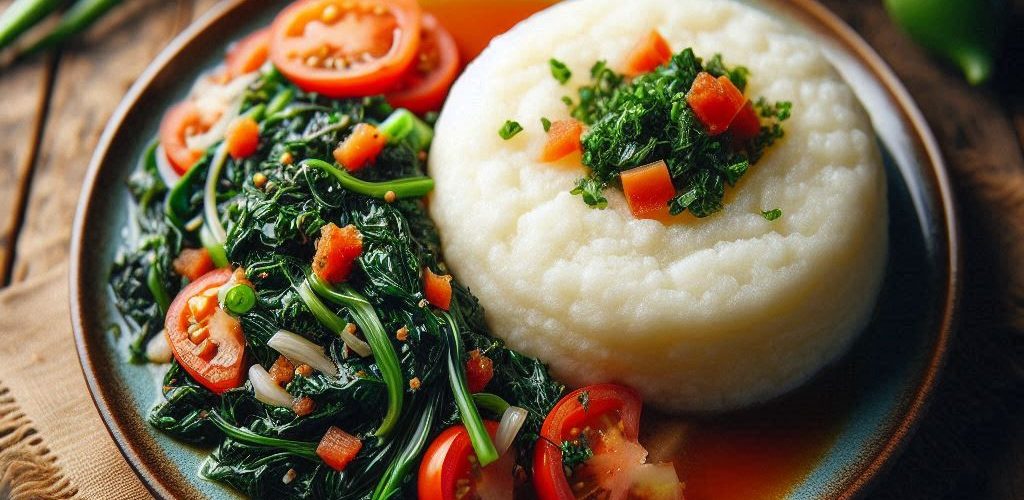When it comes to the diverse and rich culinary offerings of East Africa, few dishes capture the essence of traditional Kenyan cooking quite like Ugali and Sukuma. This flavorful pairing not only fills the stomach but also holds significant cultural importance, symbolizing community and home-cooked comfort.
What is Ugali?
Ugali is a staple food across Kenya, made primarily from maize (corn) flour. Its preparation is simple yet requires a touch of skill. The flour is mixed with water and cooked over heat until it thickens into a dense, dough-like consistency. Although the process seems straightforward, achieving the perfect texture can be an art form—ugali should be smooth, soft, and firm enough to be molded into a ball. It serves as an excellent base for various stews and vegetables, earning it a beloved place in homes nationwide.
Introducing Sukuma: Braised Collard Greens
Often paired with Ugali is Sukuma, which translates to “to push” in Swahili, a nod to how this dish complements the main food. Sukuma is made from collard greens, a nutrient-rich leafy vegetable that thrives in the Kenyan climate. The preparation of Sukuma is straightforward but essential involves washing, chopping, and then braising the greens in a flavorful mixture. Onions, tomatoes, and spices such as garlic and chili peppers are typically used to enhance the dish, creating a rich and savory experience that beautifully contrasts the mild flavor of Ugali.
The Perfect Partnership
Together, Ugali and Sukuma form a quintessential meal enjoyed by many Kenyans, particularly during gatherings and family meals. The soft, doughy Ugali is often used as a utensil—break off a piece with your fingers, scoop up some Sukuma, and enjoy a bite that perfectly balances the starchy goodness of the Ugali with the fresh, bright flavors of the greens. This hands-on approach to eating not only makes for a delicious experience but also fosters a sense of unity and togetherness around the dining table.
Nutritional Benefits
In addition to their cultural significance, Ugali and Sukuma are also packed with nutritional benefits. Ugali provides a rich source of carbohydrates, giving energy to fuel the day. Meanwhile, Sukuma contributes essential vitamins, particularly vitamins A and C, along with iron, calcium, and fiber. This combination makes for a well-rounded meal that satisfies appetite while nourishing the body.
Culinary Adaptations
While the traditional Ugali and Sukuma is beloved, many cooks also experiment with variations to cater to diverse tastes. Some might add spices for an extra kick, while others incorporate proteins such as beef, chicken, or fish into the meal, providing variations that can elevate this classic dish to new culinary heights.
Conclusion
Whether you are savoring this dish at a bustling Kenyan street market or preparing it at home, Ugali and Sukuma embodies a journey through Kenyan culture and heritage. A celebration of local ingredients, tradition, and the simple joys of communal dining, this pairing remains a staple in the heart of many households. So, next time you seek a fulfilling meal that connects you to East African flavors, look no further than the timeless combination of Ugali and Sukuma.




Add comment